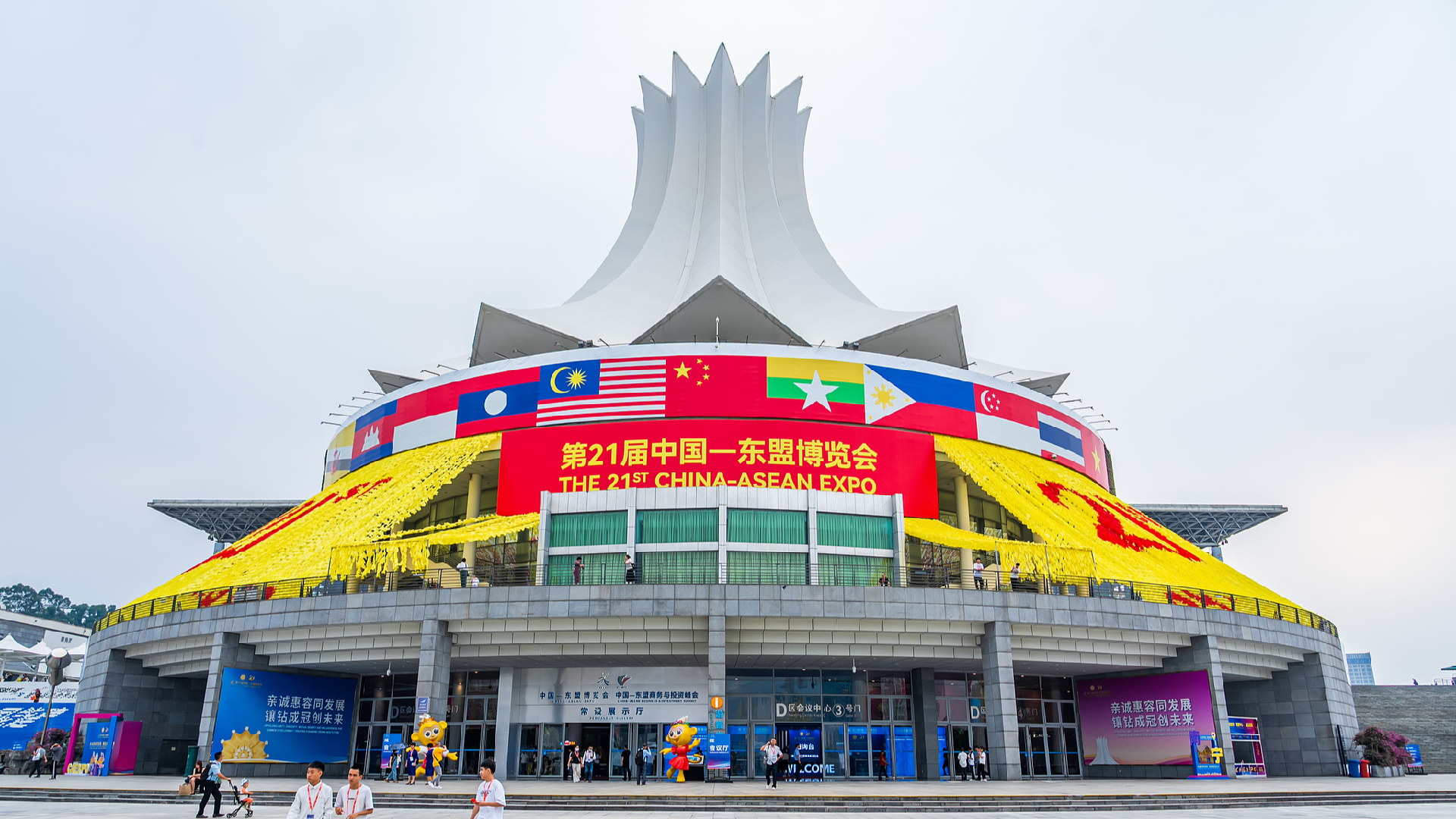Digital and green economy new highlights in China-ASEAN cooperation


Editor’s note: Gu Jiayun is the vice dean of the School of Asian Studies at the Beijing Foreign Studies University. The article reflects the author’s opinions and not necessarily the views of CGTN. It has been translated from Chinese and edited for brevity and clarity.
Sharing geographical proximity, China and the Association of Southeast Asian Nations (ASEAN) are not only neighbors that help each other but also strong partners that provide mutual benefits. In recent years, trade between China and ASEAN has grown both in volume and quality. From January to July this year, the bilateral trade volume between China and ASEAN accounted for 15.8 percent of China’s total foreign trade, surpassing China-EU trade by 2.8 percentage points and China-U.S. trade by 4.8 percentage points.
ASEAN has remained China’s largest trading partner since 2020, while China has been ASEAN’s largest trading partner for 15 consecutive years. Amid a global shift toward green and low-carbon development, both sides are expanding their industrial cooperation from traditional sectors such as infrastructure, energy, mining and textiles to areas like the digital and green economies. This collaboration has now become a new highlight in China-ASEAN cooperation.
In the digital economy sector, cooperation between China and ASEAN has seen robust demand and has delivered remarkable outcomes. According to the Asian Development Bank, as of 2022, nearly 70 percent of the over 670 million people in ASEAN countries were internet users. The e-Conomy SEA 2023 report, released by Google, Temasek and Bain & Company, indicated that Southeast Asia’s digital economy delivered $100 billion in revenue in 2023, eight times the 2016 figure. Specifically, e-commerce, tourism, transportation and media contributed 70 percent of the revenue.
<img src='https://news.cgtn.com/news/2024-09-27/Digital-and-green-economy-new-highlights-in-China-ASEAN-cooperation-1xeG14IDQ8U/img/733f5532433942848d126b814b193450/733f5532433942848d126b814b193450.jpeg' alt='Visitors at the China-ASEAN Expo in Nanning, south China's Guangxi Zhuang Autonomous Region, September 24, 2024. /CFP'
Since the “Digital Silk Road” was proposed in 2017, China has signed memoranda for bilateral e-commerce cooperation with ASEAN countries such as Indonesia and the Philippines. E-commerce and logistics brands like Tmall Global, Taobao and Cainiao have already made great efforts to establish their presence in the Southeast Asian market. In 2024, based on the achievements in digital cooperation, China and ASEAN countries signed the “Memorandum of Understanding between ASEAN and China on Cooperation in Communications and Digital Technology”, adopted the “ASEAN-China 2024 Digital Work Plan” and agreed to jointly develop the “China-ASEAN Initiative on Facilitating Cooperation in Building a Sustainable and Inclusive Digital Ecosystem”. These actions have shed light on the direction for future China-ASEAN cooperation in the digital economy. China will leverage its experience and advantages in such fields as digital economy development, artificial intelligence (AI) applications, and 5G technology to engage in more pragmatic and mutually beneficial partnerships with ASEAN in areas including connectivity in information communication and technology and digital infrastructure, cybersecurity and data security, and development of AI and digital talent.
In the field of green economy, China and ASEAN share aligned visions and promising prospects for cooperation. ASEAN’s “Green Recovery” initiative dovetails with China’s “Green Silk Road” development concept. In 2022, China’s National Development and Reform Commission and other departments issued the “Opinions on Jointly Promoting Green Development of the Belt and Road Initiative”, which laid out plans for cooperation in key areas for the green development of the Belt and Road Initiative and assisted ASEAN in implementing the “Green Recovery” program. Chinese electric vehicle manufacturers such as BYD and Neta have started expanding into Southeast Asia. Meanwhile, sectors like lithium batteries, photovoltaics and new materials are becoming imperative fields for green economy cooperation between China and ASEAN.
<img src='https://news.cgtn.com/news/2024-09-27/Digital-and-green-economy-new-highlights-in-China-ASEAN-cooperation-1xeG14IDQ8U/img/f5204459c1334a8783ad16d58a707bb5/f5204459c1334a8783ad16d58a707bb5.jpeg' alt='A view of BYD's new factory in Nikhom Phatthana, Rayong, Thailand, July 4, 2024. /CFP'
Additionally, China and ASEAN are set to explore a range of high-tech cooperative projects with massive investments and strong potential to spur industrial development. Building on this, the two sides will explore collaboration in areas such as eco-agriculture, eco-industries, eco-tourism, environmental protection industries, green services, green finance and green infrastructure construction. These efforts will present greater possibilities for China and ASEAN to jointly expand cooperation in the green economy, accelerate green transformation of social development and open up new paths for sustainable development.
(Cover via CFP)

